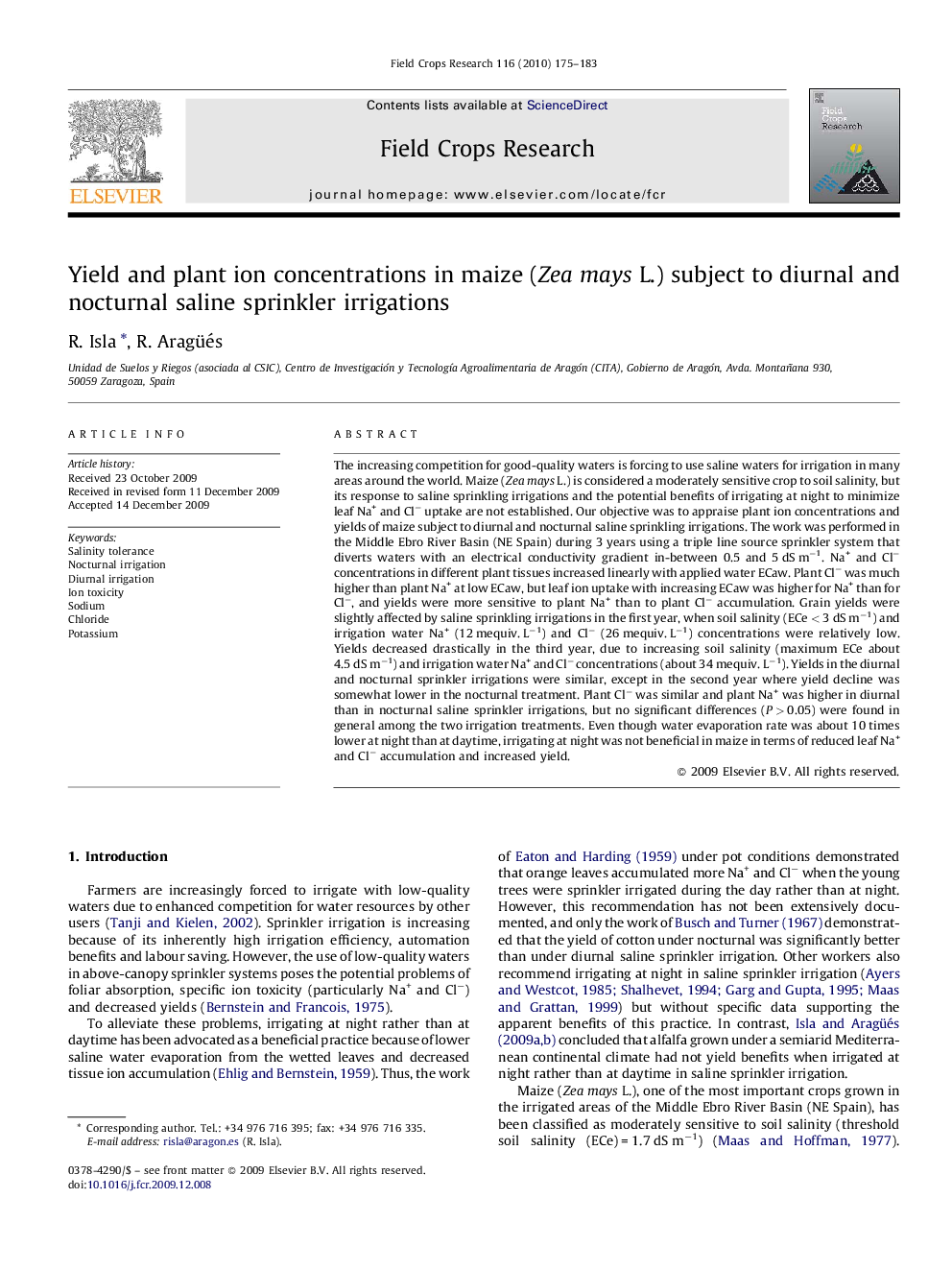| Article ID | Journal | Published Year | Pages | File Type |
|---|---|---|---|---|
| 4511214 | Field Crops Research | 2010 | 9 Pages |
Abstract
The increasing competition for good-quality waters is forcing to use saline waters for irrigation in many areas around the world. Maize (Zea mays L.) is considered a moderately sensitive crop to soil salinity, but its response to saline sprinkling irrigations and the potential benefits of irrigating at night to minimize leaf Na+ and Clâ uptake are not established. Our objective was to appraise plant ion concentrations and yields of maize subject to diurnal and nocturnal saline sprinkling irrigations. The work was performed in the Middle Ebro River Basin (NE Spain) during 3 years using a triple line source sprinkler system that diverts waters with an electrical conductivity gradient in-between 0.5 and 5 dS mâ1. Na+ and Clâ concentrations in different plant tissues increased linearly with applied water ECaw. Plant Clâ was much higher than plant Na+ at low ECaw, but leaf ion uptake with increasing ECaw was higher for Na+ than for Clâ, and yields were more sensitive to plant Na+ than to plant Clâ accumulation. Grain yields were slightly affected by saline sprinkling irrigations in the first year, when soil salinity (ECe < 3 dS mâ1) and irrigation water Na+ (12 mequiv. Lâ1) and Clâ (26 mequiv. Lâ1) concentrations were relatively low. Yields decreased drastically in the third year, due to increasing soil salinity (maximum ECe about 4.5 dS mâ1) and irrigation water Na+ and Clâ concentrations (about 34 mequiv. Lâ1). Yields in the diurnal and nocturnal sprinkler irrigations were similar, except in the second year where yield decline was somewhat lower in the nocturnal treatment. Plant Clâ was similar and plant Na+ was higher in diurnal than in nocturnal saline sprinkler irrigations, but no significant differences (P > 0.05) were found in general among the two irrigation treatments. Even though water evaporation rate was about 10 times lower at night than at daytime, irrigating at night was not beneficial in maize in terms of reduced leaf Na+ and Clâ accumulation and increased yield.
Related Topics
Life Sciences
Agricultural and Biological Sciences
Agronomy and Crop Science
Authors
R. Isla, R. Aragüés,
